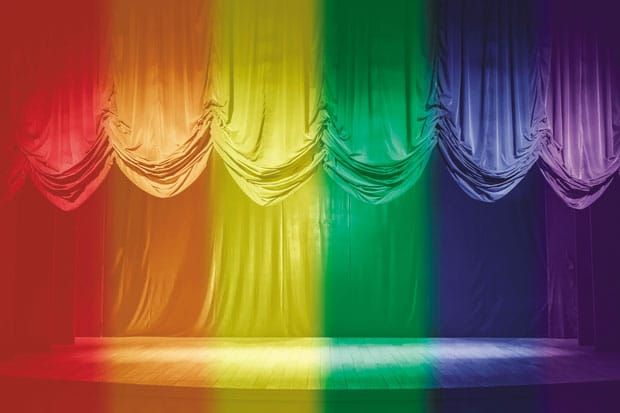By Seth Reines, April 2018 Issue.
This spring, ASU Gammage presents two 2016 Tony Award-winning productions with a rainbow of vibrant on-stage characters.
The Color Purple will take the stage from April 17-22 and The Humans playing May 29-June 3.
The Color Purple, April 17-22
Celie Johnson, the central character in The Color Purple, endures a life of abuse before finally finding a path to joy and happiness. She is made pregnant twice by her father, who gives the children away. She is later forced to marry a man who beats her and brings home his fancy woman, Shug Avery, to flaunt in front of her.
Shug is a sultry blues singer who takes a liking to Celie and teaches her that tenderness is permitted, that sex can feel good, that she has a beautiful smile and that she should stand up for herself.
Shug: [Speaking to Celie] More than anything, God love admiration.
Celie: You saying God is vain?
Shug: No, not vain, just wanting to share a good thing. I think it pisses God off when you walk by the color purple in a field and don’t notice it.
The Color Purple, began as the 1983 Pulitzer Prize-winning novel by American author Alice Walker, the first African-American woman to receive the award. Walker, an out bisexual, asserts that Celie and Shug were in every sense a couple.
When The Color Purple became a popular film in 1985, director Steven Spielberg softened the relationship between Celie (Whoopi Goldberg) and Shug (Margaret Avery) likely due to the stigma of being LGBTQ in America at the height of the AIDS crisis. Spielberg now admits, “I basically took something that was extremely erotic and very intentional, and I reduced it to a simple kiss. I got a lot of criticism for that.”
In 2005, The Color Purple made it to the Broadway stage as a musical produced by Quincy Jones and Oprah Winfrey with LaChanze (Rhonda Sapp) as Celie and Elisabeth Withers-Mendes as Shug. Unfortunately, the tender intimacy of Celie and Shug’s relationship was lost in the vastness of the production.
Finally, in 2015, Celie and Shug’s voices were clearly heard in The Color Purple’s Tony-winning revival, brilliantly directed by John Doyle.
The New York Times raved, “We see the tenderness – and the need to be cared for – that Celie sees in Shug. And we understand why these mismatched women would fall for each other. Their climactic duet at the end of the first act [‘What About Love?’] for all its gentleness, is still the most sensual love song on Broadway this season.”
The Humans, May 29-June 3
Aimee Blake is not in a great place personally or professionally, but her problems aren’t exclusively those of an LGBTQ character. Playwright Stephen Karam introduces Aimee’s sexuality without fanfare: she’s recently learned that she’s no longer on track to make partner at her law firm, she’s heartbroken after being dumped by her longtime girlfriend and she’s suffering from ulcerative colitis.
Although all of Karam’s plays feature LGBTQ characters, the 30-something out playwright has explained that his characters can exist onstage without the formerly requisite coming-out scenes, thanks to the work of such earlier gay playwrights as Larry Kramer and Tony Kushner.
Stephen Karam’s The Humans, which won the 2016 Tony Award for Best Play, is a one-act (95-minute) character-driven dramedy with the action unfolding in real time.
Erik and Dierdre Blake, a lower-middle class Irish Catholic couple, are traveling from their home in Scranton, Penn., with Momo, Erik’s mother who is wheelchair-bound and has dementia. The trio is heads to Manhattan for Thanksgiving dinner with their younger daughter, Brigid, an aspiring composer who works as a bartender; her boyfriend, Richard; and their older daughter, Aimee.
Variety wrote of The Humans, “Each and every character is enormously appealing, and Karam takes care to reveal their guarded secrets with great tenderness, just as Mantello’s directorial hand gently advances the play from comedy to tragedy. The revelations of weakness in this close-knit family are not entirely unexpected — lost loves, failed jobs, depression, money troubles, health problems, unpardonable misjudgments and the overwhelming pain of grief and regret.”
The big question, of course, is whether the Blakes can survive after this emotional holiday together. Karam doesn’t make it easy for them – or us – and the ambiguous ending seems to tilt toward darkness, but don’t bet on it. Karam has also taken great care to show us that the members of this family truly love one another, and is there a more powerful force than that?
For more information on The Color Purple or The Humans, visit asugammage.com
